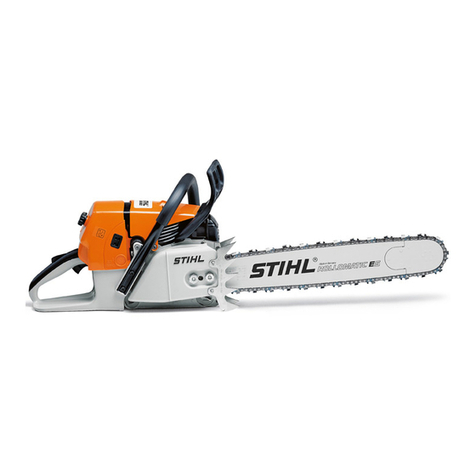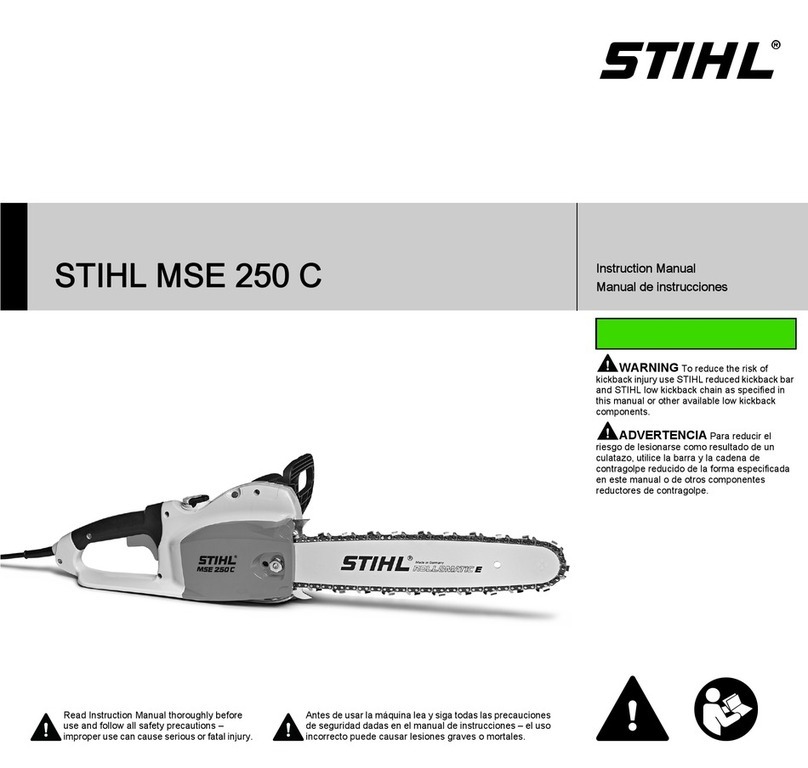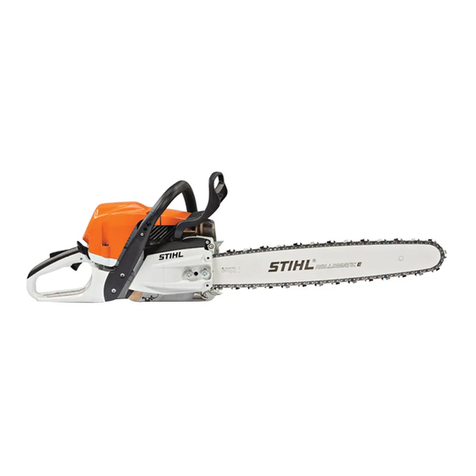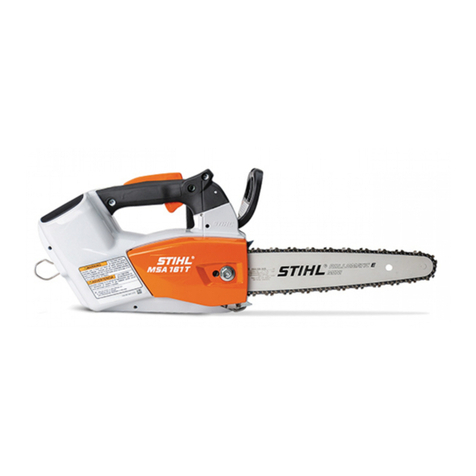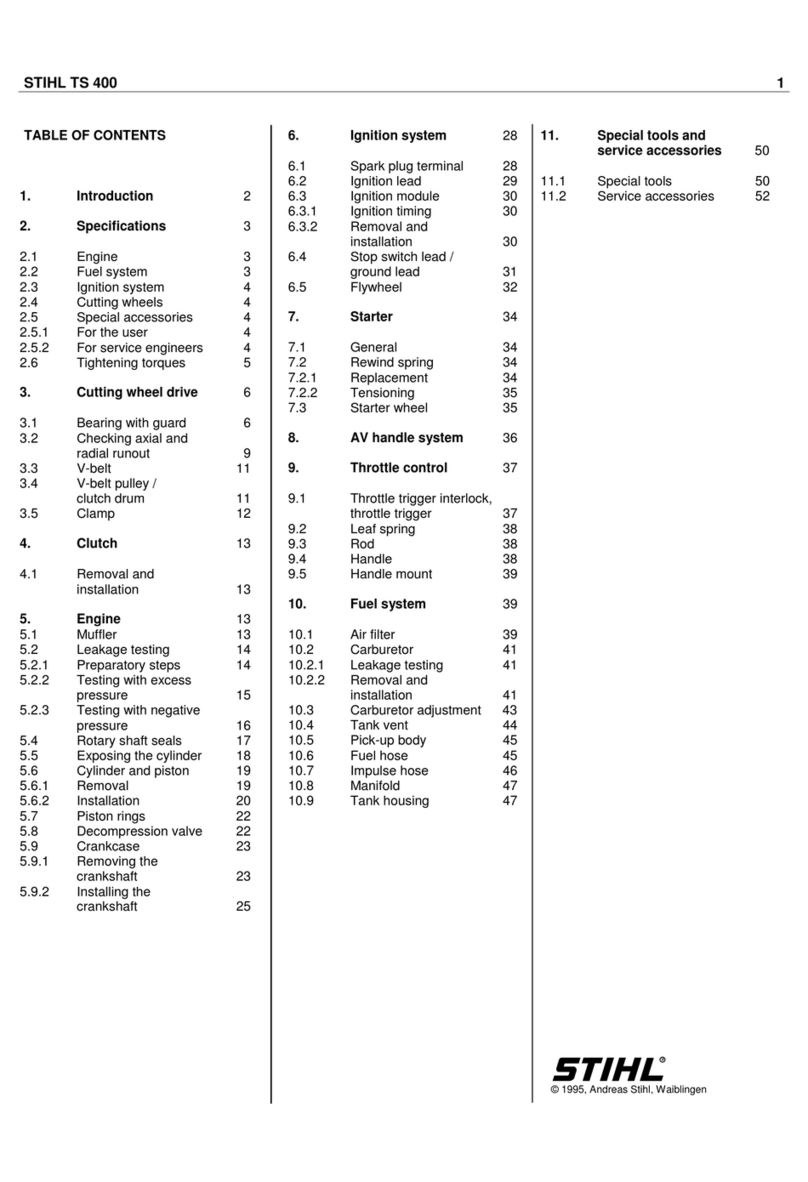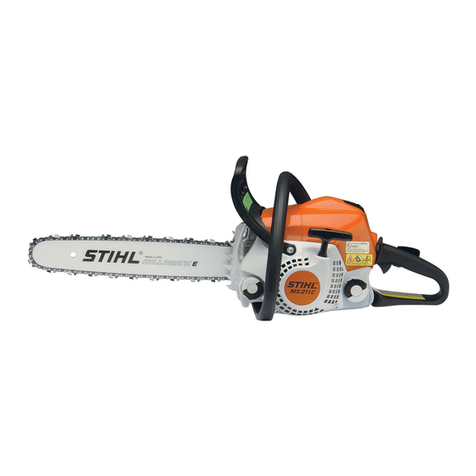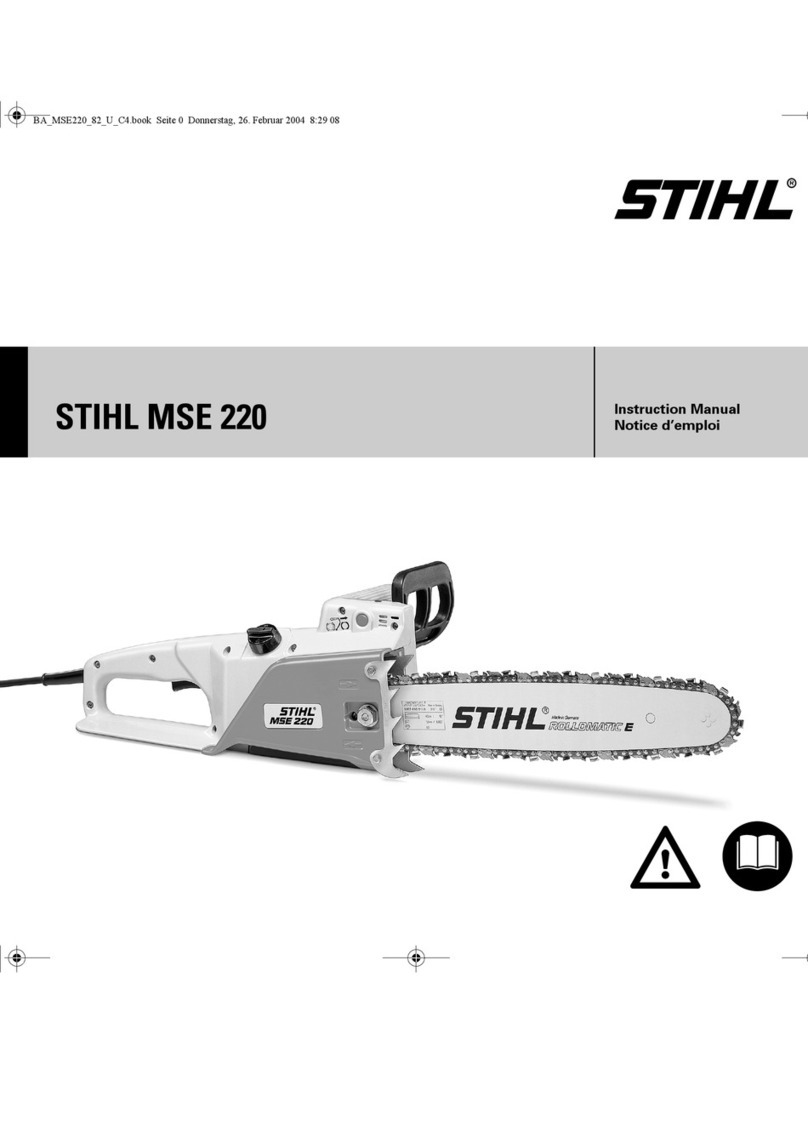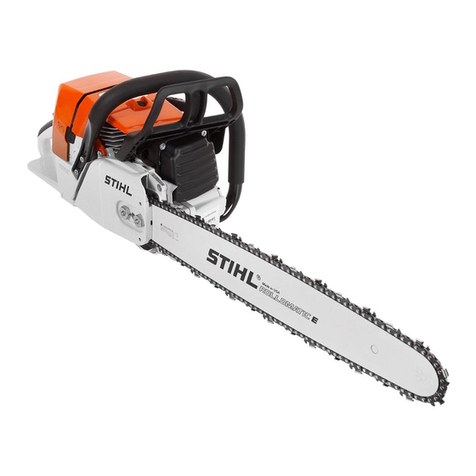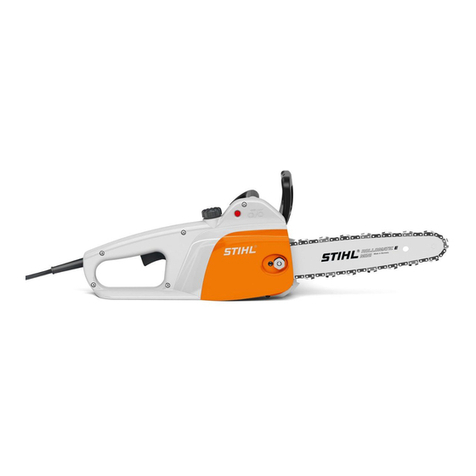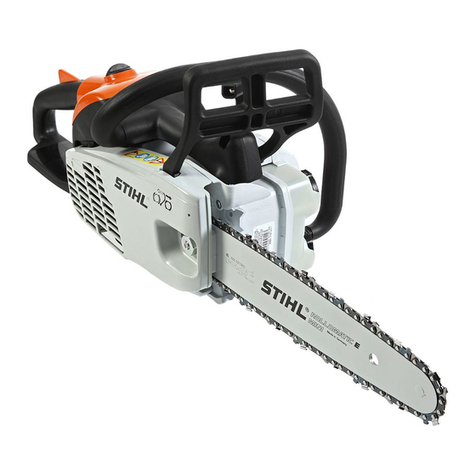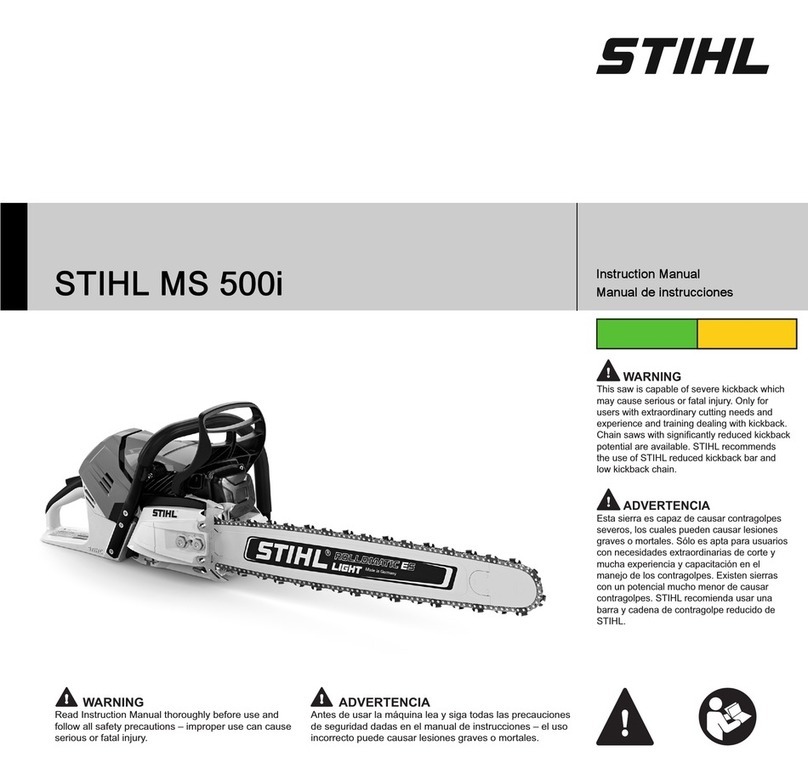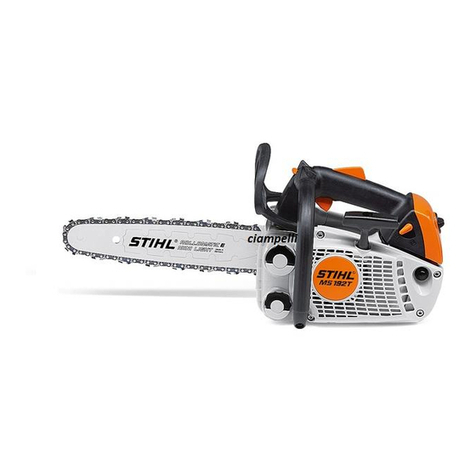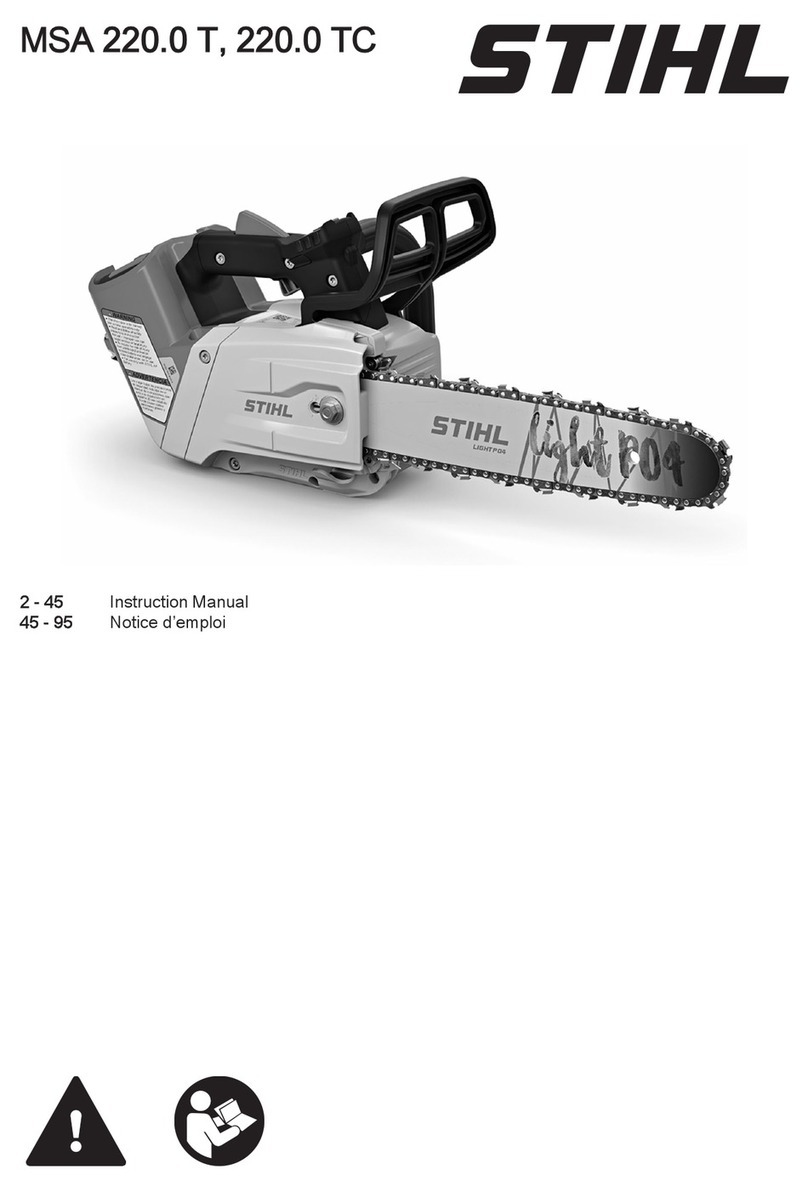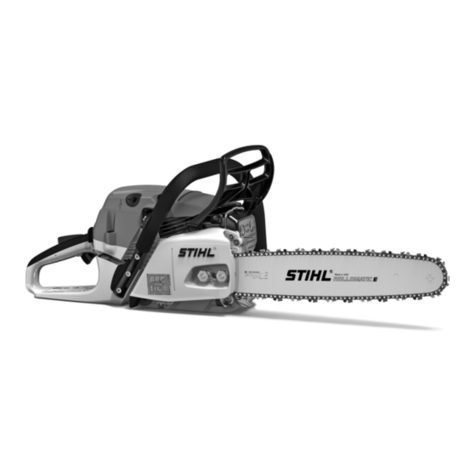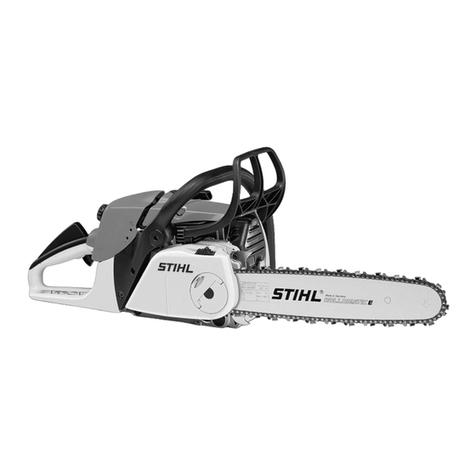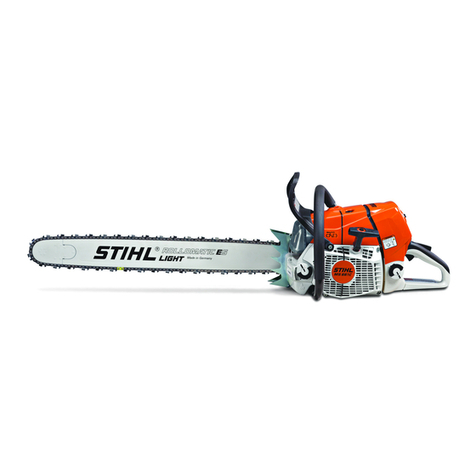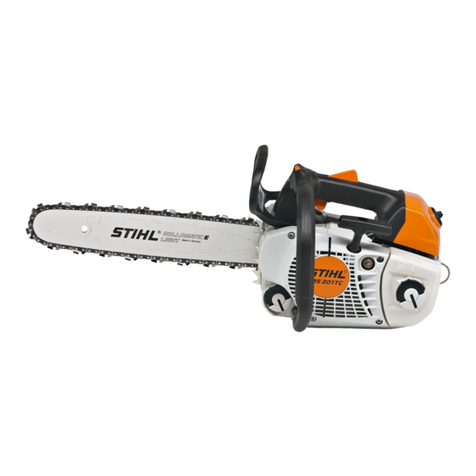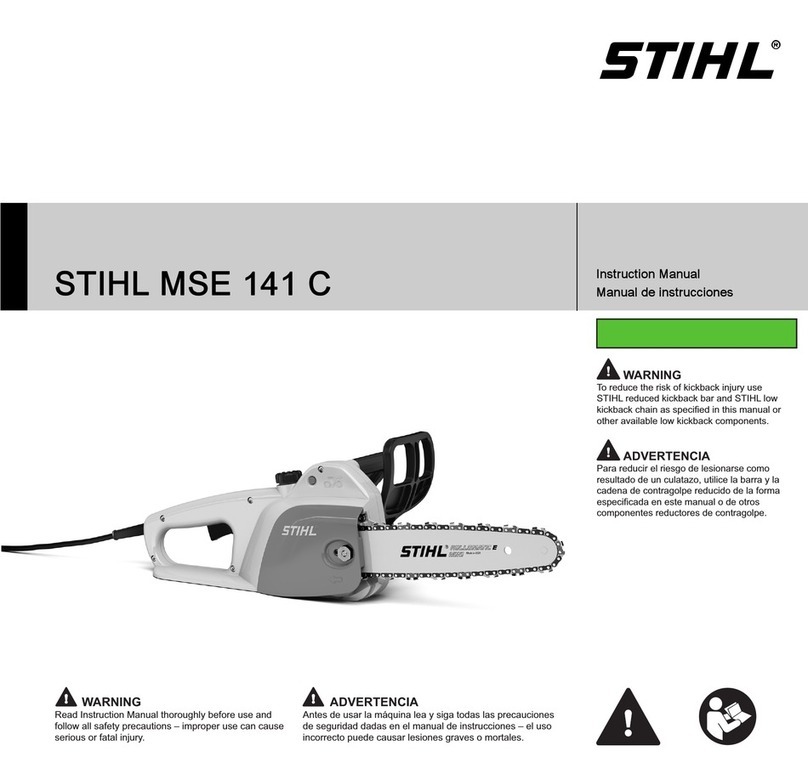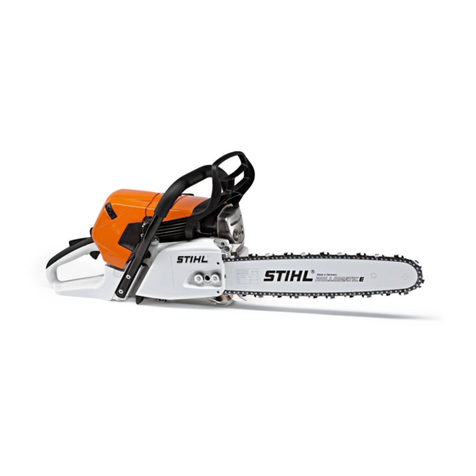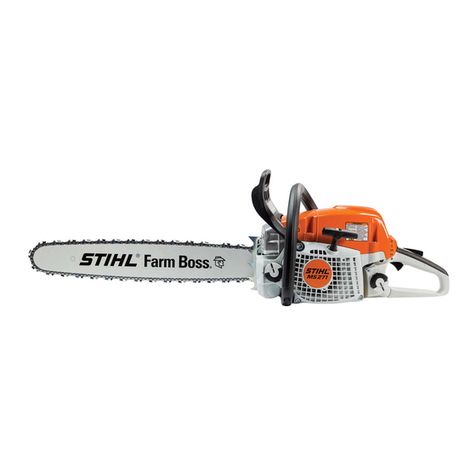Do
not
operate a chain saw when
you
are fatigued
(UI.
2).
Be
alert
.:..
H
you
'get tired while
operating
yOlir ctiain
saw,
take.
a
~r~ak.
tiredness
may
result
,in
.1oSs~f
co~.
Working
vVith
aity,chaiO
saw.
can
De
'Strenu()us.
If
you
have
any
.
conditiOn
tfiat
inight
..
be
aggravated by 'strenuous
work.
check
with
yourdoctor
befOre
operating achain
saw.
~!
PtoIonged.~
ofcl1ain saws (orother
m~ines)
exposing
the
operator to vibrations may produce Whitefinger dis-
ease
(Raynaud's phenomenon). This phenomenon redu-
ces
the hand's ability to
feel.
and regulate temperature,
produces
numbness andburriing sensations
and
may
•
cause
nerve
and
circulation damage
and
tissue necrosis.
MinySTIHL
models
are'
available with
an
anti-vibration
system
designed to reduce engine 'vibration.
An
anti-
vibration system is recommended for those using chain
saws
on
aregular orsustained basis.
Heated
handles help to reduce the risk of Whit8finger
diseaseand
are
recommended forcold weather
use.
Most
STlHL
Powerheads
are availablewith heated handles.
Anti-vibration
sYstems
and
he~ecI
handles do not gua-
rantee
that
you
will not,sustainWhitefinger
d"lS8ase~
There-
fore continual
and
regular users'should 'monitor clOsely
.their
use
ofchain saws
and
theirphysical condition.
ProperClothing .
'.
CIOthil1Q
'musfbe stUrdy
and
snug-fitting. but allow
c0m-
plete
fieedom
of'
movement.
AvOId
Ioose-fitting jackets,
~
~.jeweirY.
~
or~
pants,
or
anYthing
thatcould
become
entangled
with the
saw
orbrush. Wear
ove~~
o~
jeans
with'
a reinforced
cutting
resistant insert
(Ill
3). , . .
p.
your hands with gloves when handling saw
and
saW
chain.
Heavy-duty, nonslip gloves improve your grip
and
protectyour
hands.
Good
footing is most Important
in
chain
saw work.
Wear
sturdy boots
with
nonslip soles. Steel-toed safety boots
are
recommended.
. ,"
>.
Proper
eye
protection
Is
a must. Non-fogging, vented
goggles or a.face screen is recommended. Their use
reducesthe risk ofeye
injury.
" "
Wear
an
approved safety
hard
hat
to
protect your
head.
Chain
saw
noisemaydarriage your hearing. Always wear
sound barriers (ear plugs
or
earmuffters)
to
protect your
hearing.
Continual
and regular users should have ·their hearing
checked
regularty.
5
